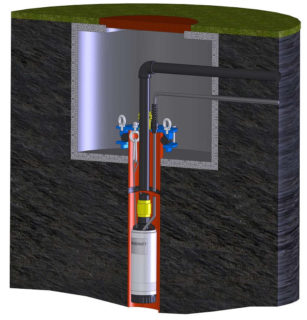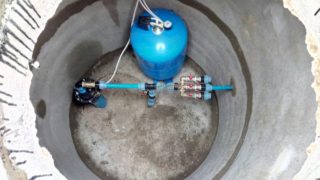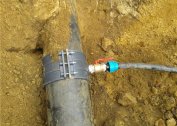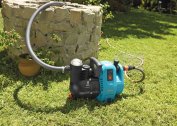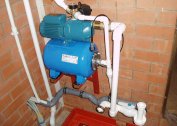Often, inexperienced craftsmen decide to make a well in a well, believing that in this way they can save on existing meters. But such ideas are fundamentally wrong. In addition, not all specialists are ready to undertake this type of work.
Is it possible to make a well in a well
Theoretically, no government documents, including SNiP, prohibit drilling inside an existing mine. Especially if she has completely exhausted her flow rate. But experienced craftsmen are often guided by common sense before embarking on a job or abandoning it. Weigh the situation from different angles:
- Assess the safety of the well itself. The likelihood that when drilling its walls will collapse or not.
- The probability of the negative impact of the rig on an already selected soil is calculated. In 85% of cases, heavy equipment simply goes down under its weight when the screw is introduced deeper.
- The difficulty of bringing the casing to the top (of its section, which will be located in the empty space of the mine).
- The risk of stumbling into a quicksand during work in this area.
- High probability of a tool falling into a finished well shaft. This will entail additional labor costs for its extraction, as well as loss of time.
- If the concrete rings are shifted about its axis, this indicates that the sandy horizon is curved beneath them. That is, specialists will have to work hard so that the mine does not completely collapse.
When drilling a well in a well, a master who wants to save money, on the contrary, incurs additional costs. The price per meter of work performed always includes the stages of casing installation, the type of material used for the column (metal, polymer), as well as its diameter. The pipe will still need to be further strengthened, since the column cannot simply stand in the air without supports for 10-18 meters (average depth of drinking wells).
Features of arrangement
If you nevertheless decided to drill in the well shaft, you need to take into account such features of the work and arrangement of the source:
- It is better to form a well in late summer or early fall, when the water level is as low as possible.
- So that water from the well shaft does not interfere with drilling, you need to install a special pipe to the entire depth of the source (the so-called conductor). Thus, the channel of the future well is well protected from moving ground masses and water. If necessary, the conductor is gradually lengthened using stackable couplings.
- It is important to protect the new aquifer from getting into it from an existing source. More often open wells contain organic matter: fallen bodies of birds, bats, etc. When they fall into a new layer, they pollute it. But after all, neighboring wells can feed from one horizon.
- After drilling and installation of the casing string, it is advisable to fill up the mine of the old spring and compact it well. But so that the column does not lead.
- When performing work on flat ground, flushing fluid is expelled into the sump (a special cavity near the drilling zone). In the case of work in the well there is no such tank. Therefore, specialists have to show additional ingenuity, complicate the usual design when drilling.
The best option for generating a source in an already finished old well is the Abyssinian well manually. Provided that the shaft depth does not exceed 8-10 m. It remains to drive a pipe-needle and bring it to the surface. More in-depth work will be technically challenging for drillers.
Steps for installing a well in a well
There are two ways to drill in the mine of an existing source:
- Installing a conductor of sufficient diameter. It really helps, even if there is still water in the well. From the conductor make a tap into the sump and perform drilling.
- Fill the well shaft to the brim with flushing fluid and deepen gradually. But this method is very risky. First, it is difficult to maintain the viscosity of the drilling fluid in such conditions. Secondly, in contact with limestone and opening it, the entire mass can pile the tool.
The second drilling option is less real and is rarely used. To make a well in the well, the master will have to look carefully for professionals who are ready to take up such a thing. It should be prepared for a possible warp of the foundation of the house under the weight of the equipment. Perhaps it’s better not to risk it and just drill a separate well in the area, and simply fill up the well shaft.
When forming a new source, it is advisable to put a plastic casing in the well. It is lighter and not subject to corrosion.
